This is all in support of Darwin Day 2009, a massive, worldwide community event - and to spur participation from everyone, no matter where they are in the world, we are giving away a complete three volume set of The Life and Letters of Charles Darwin which includes an autobiographical chapter from Sir Charles and was edited by his son Francis Darwin, printed in 1887.

It's a terrific addition to any Darwin collection and everyone who participates will automatically be entered in the drawing.
If you're writing here and want to participate, just use Show Me The Science or 30 Days Of Evolution Blogging somewhere in your article (you can do it just by using those links) and if you're from outside this community and want to be linked anyway, put this handy badge either in your article or in the sidebar on your site and it will appear here (be patient - it takes about a day).
It will look like this:

So here we go!
February 21st:
Have you heard of pharyngeal teeth? No, we don't mean the teeth of P.Z. Myers at scienceblogs.com but a second set of jaws available in some creatures. That's evidence for an ancient gene regulatory network and Mike White breaks it all down for you in The Evolution Of Teeth.
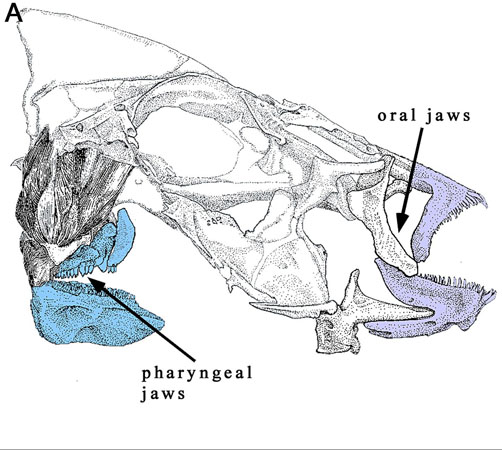
Darwin was a smart guy, so smart he knew that a word with multiple meanings like evolution wouldn't help people understand descent with modification. But sometimes words choose you instead of you choosing them and you can learn about the evolution of the word evolution here.
February 20th:
The transition from one-celled microbes to multicellularity was a huge step in the evolution of life on this planet, but as daunting as this evolutionary step seems, it didn't happen just once. Today's plants, fungi, animals, and various types of algae are all descendants of separate transitions to multicellular life.
February 18th:
Often when something new crops up in evolutionary history, it's usually the result of tinkering with functional, preexisting molecular tools. Some NYU researchers find that the protein cues used by fruit fly embryos to direct their migrating reproductive cells are processed by some very ancient cellular machinery.
February 17th:
Black wolves look like creatures out of frightening fairy tales, but their black color actually came from pet dogs. Unravel The Genetic Mystery of Black Wolves.
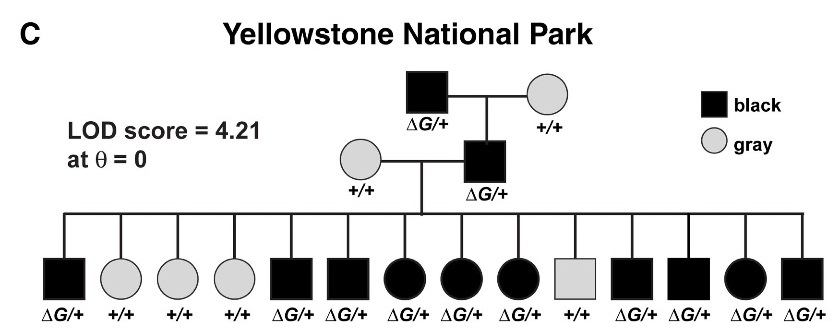
February 16th:
What happens when a big chunk of your genome is accidentally copied? Bad things could obviously happen when when sudden and dramatic changes are made to your genome (which is why we wear sunblock on the beach and lead shields when getting X-rayed).
How frequently do these large duplications arise, and what role have they played in human evolution?
Now you know!
February 15th:
What can explain The Persistent Divisiveness of Darwin? It's tough to say, though it should be noted that Lincoln has his detractors for suppressing a revolution in the same way Darwin has detractors for starting one.
Keen on meeting a neanderthal? You're not the only one and the question is, why shouldn't we clone one?
February 12th:
Michael Barton at The Dispersal of Darwin discusses what got him hooked; it wasn't the brilliance of natural selection or the mechanisms of evolution, it was his work as a naturalist - and maybe a little bit of
"Jurassic Park."
Afterward, take a walk down Creationist Nostalgia Lane and also a new look at the Kentucky Creationism Museum.
February 11th:
In the mood for a walk? How about the random kind, namely genetic drift?
Natural Selection is just one mechanism in the process. Because it's just one process, things can happen even if they are not beneficial and, because Ma Nature sometimes has a sense of humor, things can even go to a weird place on occasion.

In RNA, HIV, and the Origins of Life, Nicholas Horton says:
The central dogma of Molecular Genetics is that information flow is unidirectional: DNA to RNA to PROTEIN. That is, DNA holds the blueprints, RNA is the messenger, and Proteins are the constructed functional units of life.
This dogma seems to hold for most of the species on the planet. From bacteria to humans to insects, the central dogma acts as a unifying theory of life’s architecture. But, there are a few key exceptions.
Exception, of course, being where all the magic of science happens.
February 10th:
Gibbon Chromosomes Shed Light on the History of Ours
Today's paper, Sequencing human–gibbon breakpoints of synteny reveals mosaic new insertions at rearrangement sites, is not just interesting because two of the senior authors work one floor below my lab, or because the other senior authors is speaking to our department on Thursday. This paper is an interesting glimpse into the chromosome shuffling that went on in our evolutionary history:
February 9th:
The Speciation Is Explosive!
Today's paper is a DNA comparison study of the class of birds known as white-eyes (the Zosteropidae), which have demonstrated an amazing capacity for evolutionary diversification.

February 8th:
What Goldilocks Can Teach Us About Natural Selection
Natural selection is often much like Goldilocks - an organism's traits shouldn't be too hot or too cold; natural selection likes them just right. In other words, traits are under pressure to remain near an optimum. If they deviate too far, natural selection will not-so-gently prod things back to the center. This phenomenon is known as stabilizing selection.
February 7th:
How Would We Evolve If We Always Opened Beer Bottles With Our Teeth?
Imagine a world where the major source of human nutrition was beer. That may sound fantastic to some of you, but now imagine that, in this beer-world, there are no bottle openers and no twist-off caps. To get at the beer, you have to open the bottles with your teeth. Day in, day out, you're opening bottles with your teeth. If the world continued like this for a few thousand generations, how would the human jaw evolve into a better beer bottle opener?
February 6th:
Another Amazing Fossil: A Giant Tropical Snake
A group of researchers has discovered the fossil vertebra of the largest snake known to date. At an estimated 13 meters (about 42.6 feet) long, this monster, named appropriately Titanoboa, lived in tropical South America about 60 million years ago.
February 5th:
The Amphibious Ancestors of Whales
In what is now central Pakistan, an eight-and-a-half foot long, pregnant aquatic mammal went belly-up, and sank to the bottom of the shallow coastal waters. 47 million years later, a huckster by the name of Duane Gish denied that such mammals ever existed:
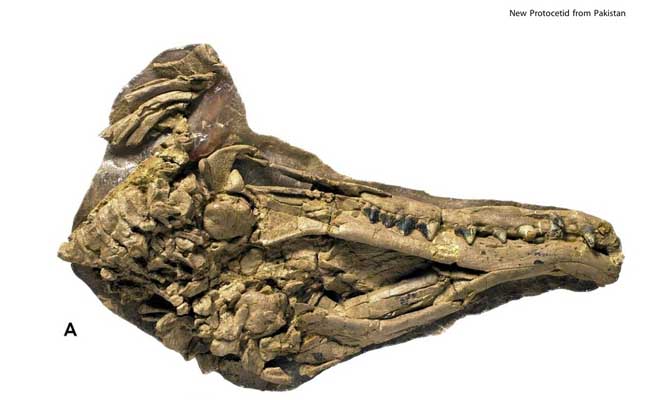
February 4th:
Poor Gene Copying and the Evolution of New Species
30 Days Of Evolution Blogging: Who Is Writing "The DaVinci Code" About Biology?
Where Is "The DaVinci Code" Of Biology? I should be able to get this Hollywood movie made in two paragraphs.
February 3rd:
What a New Fossil Tells Us About New Zealand's Watery Past
A tuatara may look like an iguana, but it's a reptile in a category all its own. Tuataras are most closely related to lizards and snakes, but in some ways they are oddballs among reptiles, with unique characteristics among reptiles, like their affinity for cool weather, their nocturnal lifestyle, a third eye on top of the skull, and vertebrae that more closely resemble those of fish and amphibians than reptiles.
Jerry Coyne: A Letter To Darwin - Here's What Has Happened In The Last 150 Years
Happy 200th birthday! I hope you are as well as can expected for someone who has been dead for nearly 130 years. I suppose that your final book, the one about earthworms, has a special significance for you these days.
30 Days of Evolution Blogging: The Long View
It is well-known that I dig on evolutionary theory (as well as BBQ and pie). But, come on. The 150th anniversary? The 200th birthday?
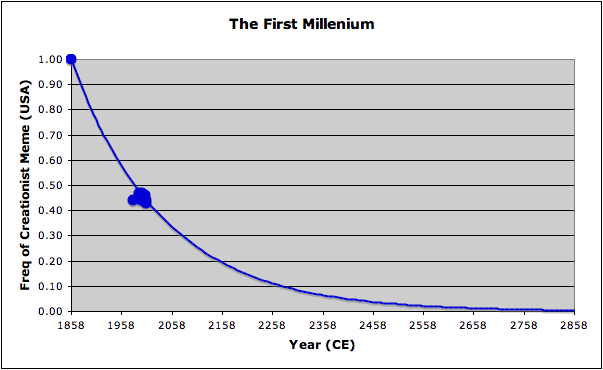
30 Days Of Evolution Blogging: What Tiktaalik Roseae Means To You And Me
In 2004 a University of Chicago researcher discovered something every evolutionary biologist knew had to exist - a missing link between land animals and fishes.
30 Days Of Evolution Blogging: The Origin of Galapagos Plume in Bloom
Charles Darwin wrote in 1835 about the Galapagos Islands:
February 2nd:
Yet Another Gene to Create Species
Yesterday we discussed the discovery of a gene that keeps mouse subspecies from producing fertile hybrid offspring. In other words, a gene that is putting a reproductive barrier between incipient mouse species.
February 1st:
Hunting for Genes that Keep Species Separate
Speciation Genetics is, in a sense, an oxymoron. Genetics is the study of heritable characteristics, but the researchers who study speciation genetics are looking for genes that cause inheritance to fail.
January 31st:
Deciphering the Tracks of Evolution in Our Genomes
How did we become human? You can ask the same question in a slightly different way: how did we become different from chimps?
January 30th:
Size Matters for Plants Too
Reproduction involves some tricky trade-offs for all species, and anyone who has watched a David Attenborough film knows that you can find a wide range of reproductive strategies in nature.
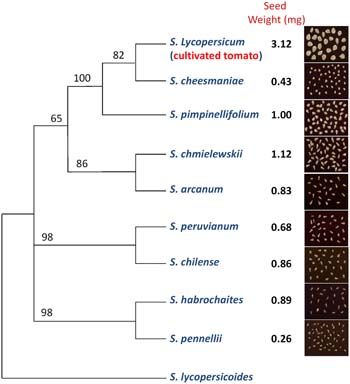
Coffee Break Science Browsing
It's Friday and time for a coffee break. Looking for more Darwin reading? (If you're already sick of the Darwin Bicentennial, you're in for a loooong year.)
January 29th
Putting Evolution in Reverse
How do two populations change genetically when they are subjected to different evolutionary pressures? To answer this question, many intrepid evolutionary biologists have trudged out into the field to painstakingly study wild populations, but in many cases, we can learn more by studying evolution in the lab.
January 28th
Primitive Dinosaur Feathers
Birds are the modern day descendants of dinosaurs, or as paleontologist Kevin Padian likes to say, birds are dinosaurs. But how did birds evolve from grounded, naked reptiles into plumed aviators?
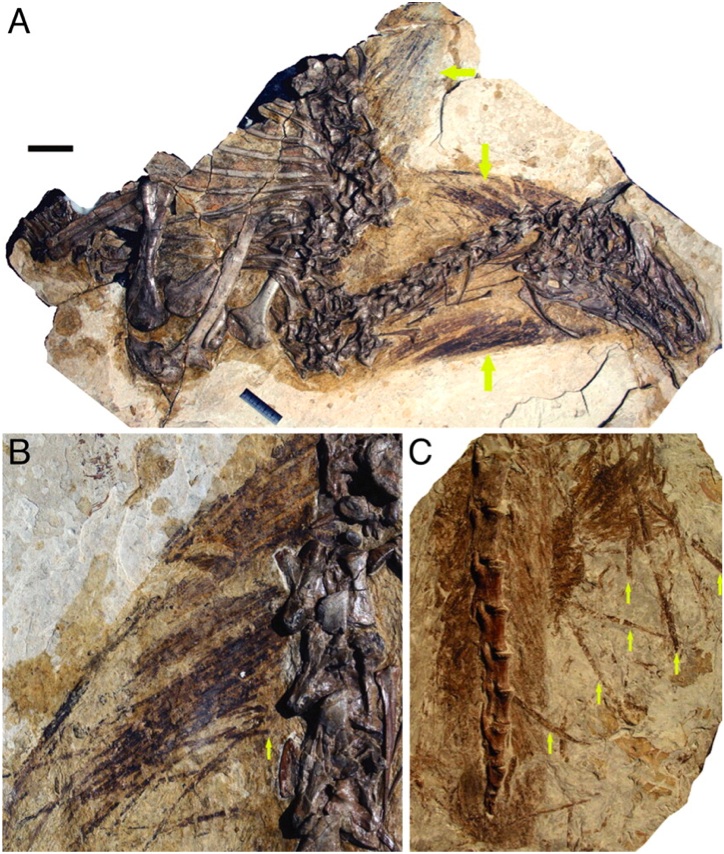





Comments